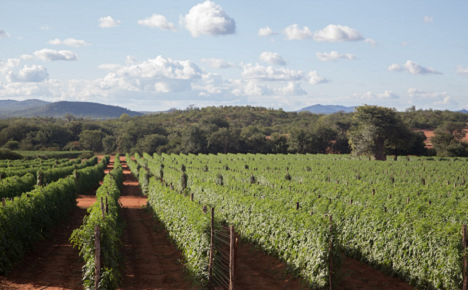Most of South Africa’s tomatoes are coming from Limpopo, followed by the Onderberg in Mpumalanga.
Some tomato farmers on the West Coast are still cropping, while farmers on both sides of the Orange River are gearing up for their tomato season.
Over the past two months tomato supply has been sufficient and only now volumes have been slightly dipping perhaps as a result of cool weather and out-of-season rain in the Western Cape. It’s not been the usual March/April changeover, remarks Jan Potgieter who trades with tomatoes at the Johannesburg fresh produce market.
Tuta absoluta and bacterial diseases reduced the amount of first grade tomatoes after a very wet summer.
“The supply of first grade tomatoes is now picking up, but for a while it was difficult to get first grade after the rain on tomatoes from the Western Cape, Limpopo and in the Onderberg.”

Slight increase in tomato prices
Over the past week tomato prices have risen somewhat, settling at a comfortable R9 (0.43 euro) to R12 (0.57 euro) per kilogram of better tomatoes, he says. The problem, though, is demand.
“At all levels of the market, except onions of which there's a shortage, we struggle with demand. The economy has definitely taken a knock. From the weak demand you can tell that there’s a problem with the economy,” he says.
Tomatoes form an indispensable part of the diet of South Africans, a large part of whom have little to spend on food. “It’s very important for them to have tomatoes. It is concerning that demand is so poor.”
Electricity
“But the main challenge is power for pumps for water, packhouses, washing machines. It is costing farmers an enormous amount. I have been told by a farmer that where his energy costs used to be 12 to 15%, it now runs to 48% of his production costs.”
The untenable situation is aggravated by the theft of cables and transformers, obstacle upon obstacle in the path of farmers, Jan observes.
At least, he notes, loadshedding at the Johannesburg fresh produce market has improved on last year, apart from cable theft. “Our electricity is much more constant than it was.”
Transport costs are a “big, big factor. Decision to transport tomatoes have to be completely price-driven.”
He reckons if there are no other major weather issues or even higher instability of the electricity supply, a fair amount of tomatoes should be coming through for a fairly normal June, July, August with ok demand.
“At this stage the demand on markets – and at retailers, I think – is so weak, and the economy under so much strain, you can almost touch it.”
